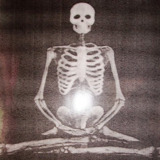Star Ocean: Integrity & Faithlessness, tri-Ace, and how 'retro' cannot be an excuse for creative failures.
By GrizzlyButts 22 Comments

I'll come right out and say it: I pre-ordered Star Ocean: Integrity & Faithlessness. Yeah, I know, either I am a weird anime person or I am one of the few people who kept liking JRPGs since they 'died' roughly around the time Call of Duty became a console 'thing'. So, I pre-ordered this game for $47.99 (Amazon Prime) and received it on June 28th, 2016. I played one hour of the game then immediately sold it on Amazon for a total loss of $12.99 after shipping and fees. I didn't even think to touch it again for 337 days, 92.3% of a full year, when I decided to finish the game for the sake of never again wondering if it was a good game that I judged too quickly. This meant purchasing the game for $13.49 (again, Amazon). To date I've spent a total of $26.48 on the fifth main game in the Star Ocean series. Keep that number in mind as I explain how much time I spent with the game, because I'd like to take a serious look at JRPGs and the value of the experience being objective vs my own subjective opinions of the 'piece'. And oh, what a piece it is.
This'll take a while. Here's the games excellent soundtrack: Star Ocean: I & F OST Playlist
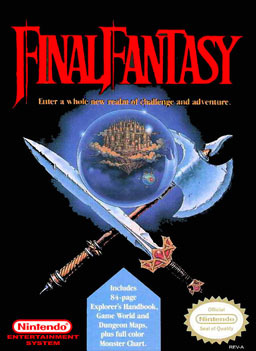
Why should the Star Ocean series of JRPGs matter? Most people would say that it is a low-budget, slip-shod set of Japanese RPG games that never evolved beyond the innovation of the first two games. All that I really have when talking about anything is my own personal opinion. An opinion informed by playing console video games since roughly 1990. The first game I played was Duck Hunt. I think the first time I felt truly lasting rage for a video game character was the first time that dog fucking laughed at me for missing. The first game I bought with my own money for the NES was Final Fantasy. The box art was amazing, the moment I saw it I began imagining all the awesome shit I'd do in the game. It was hard and confusing, the booklet was huge but it wasn't that helpful. I was about 9 years old and it was kind of a mess to read with a lot of mentions to things in game that were abbreviated in the actual game. I knew how to level up, just keep fighting, and eventually just kept leveling up. I leveled up more and then I could make it through a dungeon, I leveled up more because the game got harder again. I lost progress and that sucked. I leveled up more and more and more and months later I was able to beat the game. It felt great, not unlike the feeling of beating a hard boss in a Dark Souls game. Final Fantasy was the Dark Souls of my JRPG childhood.
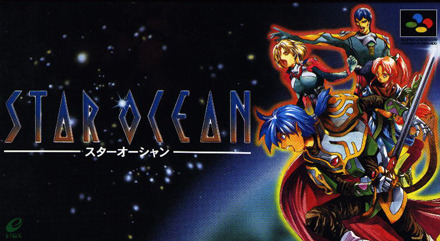
Fast forward roughly seven or eight years. I'd played every single RPG I could buy on the SNES (favorites were: Lufia II, Final Fantasy 4 and 6, Secret of Mana) and I couldn't yet afford a Playstation or a copy of Chrono Trigger. I was about to start high school and there was no way I was going to spend a dime on anything until I could get that shit-hot PSX. What did I do? I got on my 56k dial-up internet and used Yahoo to search for Chrono Trigger. Lo and behold, I discovered emulation. At the time the premier emulator was ZSNES. My older brother and I took turns playing through the game using a keyboard, it was amazing because we'd probably played through Final Fantasy III (VI) three times at that point and this was arguably more visually interesting and free. I'm not here to condone piracy at all, just relay some real experiences. It turns out there were hundreds of SNES games that I'd never heard of and most of them were in Japanese. Translation patches and such were in the works for all of the hottest and biggest SNES games, mostly RPGs. The first, biggest translation + ROM release of the era? Tales of Phantasia. The first game in the Tales series was incredible as it played like a fast, beautiful traditional JRPG with excellent music and a battle system that had nuance similar to fighting games. The direction you pressed in tandem with a button and the distance between you and your target (plus whether they were flying or not) determined which attack or spell each character would perform. It blew my mind that this game was so incredible, huge, beautiful and impressive but it never made it to the US (all of the posthumous ports GBA/PSP etc. are terrible and mangled). I moved on to Seiken Densetsu 3, an incredible sequel to Secret of Mana that was five times as large and replayable between six main characters you could choose a group of three from. Needless to say that was my favorite SNES game of all time besides Super Metroid. Uh, wait man, so when do we get to Star Ocean?
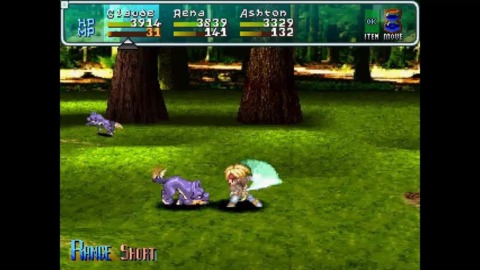
Japanese video game developers tri-Ace formed out of backlash against Namco's corporate restructuring in the mid 90's. During the end of Tales of Phantasia's development in 94/95. Most of the team left Wolfteam (now Namco Tales Studio) to create tri-Ace. The result, after the unhappy development of Tales of Phantasia, was to create a new story with familiar gameplay assets: Star Ocean felt much like Tales... albeit with a different battle system and a science fiction storyline. Star Ocean was absolutely one of the most impressive SNES RPG games ever made eclipsing the already impressive Tales of Phantasia. The late release (1996) and use of a specialized chip prevented it from coming overseas. By the time there was an emulator enabled translation patch released for it, I had purchased a Playstation and was elbow deep into my first two games: Final Fantasy VII and Star Ocean: 2nd Story. Its a shame that I have never played Star Ocean, but it is important because missing out on the game created an empty feeling that I'd missed one of the coolest SNES things ever. It compelled me to play 2nd Story, which was only marginally related to the first game anyhow. 2nd Story is a decent JRPG that uses a strange combination of pre-rendered backgrounds, a 3D overworld map with 2.5D free-roaming battles. It was the first RPG I played that had any voice acting and it definitely felt like a game made by the folks who made Tales of Phantasia, using a lot of the same signature sound effects that tri-Ace uses to this day. It is definitely an ugly game, the 2D sprites have an odd color palette and seem pulled from an SNES game, but the story was actually pretty interesting despite its simplicity and the amount of mystery surrounding the first half of the game made it really fun. It was certainly ten times as coherent as Final Fantasy VII's story. The important thing was that I was into Star Ocean, for all the jank and anime it was worthwhile. Where could things possible go from here? The Playstation 2.
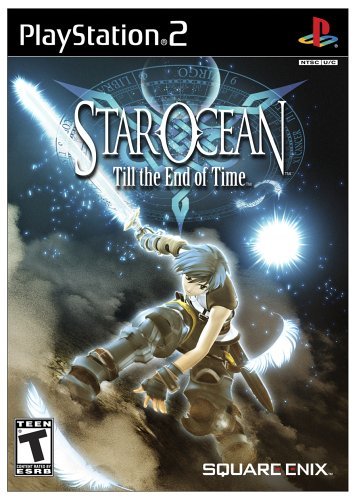
This post isn't just about Star Ocean and what it means to me what really matters to me is tri-Ace and their occasionally incredible catalog of JRPG games. Valkyrie Profile was the studio's next game. Holy shit. Valkyrie Profile is one of the best PSX games ever made and easily the best PSX JRPG in hindsight. Star Ocean wouldn't return until 2003 and in those five years a lot had changed both in video games and in JRPGs in general. The Tales of... series took off, and other IPs like Grandia had refined the action-style combat tri-Ace had spearheaded to keep things interesting and development of Japanese RPGs was riding a building-sized wave of success on the late PSX/early PS2 era. People were buying millions of JRPGs all over the world and the decline in interest had already begun once Star Ocean: Til the End of Time was release. The issue was simple: Anime. I honestly didn't care anymore because JRPGs had enough graphical capability to work with on consoles that they were finally revealed as Battle Systems with intermittent Anime in between the level grinding. Final Fantasy X sucked, it was unbearable to sit through. King of Fighters started to look and feel horrendously anime beyond what was imaginable, and Street Fighter III went ultra-anime. I'm not anti-Japanese animation at all, some of my favorite animation comes from Record of Lodoss War, Big-O and I beat Persona 4 before it was a cool thing to do. I stuck it out, I put in my time and despite the awful QT-pie anime nonsense, it was a fun game. The battle system added blocking, parrying, and ease of switching between abilities/spells and characters. It was a fully 3D version of what they'd done in the second Star Ocean game. It really felt like progress and the game as a whole was better written and performed than the Tales games of the day. The combat was sharp enough to carry the game despite the formula still feeling stuck in the 90's. As shallow as some of the personal relationships were, there were honest story moments that kept me interested in the anime tropes. It was a relevant game at the time as it reviewed well despite some issues with the Japanese release. tri-Ace would then go on to make two really impressive games afterwards, they were on a hit streak with Radiant Historia and Valkyrie Profile 2: Silmeria. Oh wait, actually nobody really cared about those games. It's a shame because if you went back and played Silmeria today, it really is a fantastic game with a mind-boggling tactical-action combat system. Honestly, I'm going to get to the point here, eventually.
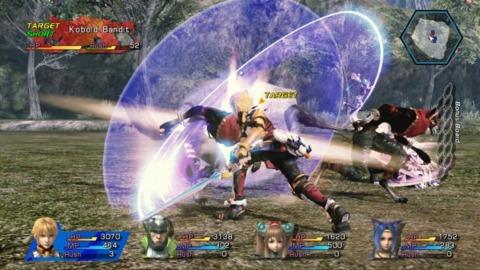
I didn't get to play Star Ocean: The Last Hope because it was only released on XBOX 360 when it came out in 2009. I didn't care one bit, because that year I was playing games likes Demon's Souls, Arkham Asylum, Killzone 2, and *sigh* Final Fantasy XIII. Lets start getting really really real here, I didn't want any more anime RPG games. They'd become so childish, so grating, that I couldn't do anymore "12 year old helpless twee girls needs to be saved" stuff. I'm just not -that- guy at all and when I started playing JRPGs I was saving women like Rydia and Terra who were absolutely strong and developed strength as the story progressed. So, I bought Star Ocean: The Last Hope International Edition when it came out on PS3 and of course, they'd replaced the anime UI with more realistic renderings. It was an attempt to 'fix' a poorly received game with new music, new art, and more options. It was a decent game. The big problems I have with Star Ocean: Integrity & Faithlessness start with the fact that it is a follow up to The Last Hope. Not that The Last Hope was great, but it was an improvement on the previous game with a battle system that rewarded dodging, parrying, and not just blocking. It rewarded the player with different post-battle boosts (EXP, currency multipliers etc.) if they avoided getting hit with multiple/critical attacks. You could hit a button and run while in dungeons or in the overworld. Brilliant, and hey the story was awful anime. Finally, we're here: Star Ocean: Integrity & Faithlessness is the worst JRPG I have ever played (1990-2017).
There are many, many things wrong with Star Ocean 5 that are completely subjective gripes and while I won't dismiss every nagging issue I have with the game I will try to stick with somewhat objective issues that the game has. Since I've been a little negative when talking about the two previous games I'll start with the positives:
- When it comes to character design, presentation, and the modeling and animation for the characters tri-Ace has done a beautiful job of bringing an adorable anime cast to life within a video game. Sure, they're stiff and flap their openings when talking but they move like cartoon characters in a completely nice looking way. I don't know what, if any, difference it makes when played on a PS4 Pro and 4K HDR TV but I did notice it was better looking and faster loading than when I'd initially played the game on a standard PS4 and a 1080p television. The games presentation does have major flaws, the lack of cutscenes is a major oversight and scenes play out like MMORPG dialogue where you have control of the camera and once the cast raises to seven you'll never see half of their faces.
- The game's soundtrack is classic Star Ocean and feels like a continuation of the style found on the previous game. Each town has it's own theme, there are several battle themes, and the games sound design isn't any more of less of a mess than any game previous. Character's voices do overlap in battle and they often talk over each other when announcing their spells/attacks but that is standard for all Tales of... and this style of game.
- There is a mountain of side quests to go through and regardless of their quality there is always another reason to be grinding other than just leveling up your skills, specialties. There is always something to do and a huge number of things to learn, more than the game can actually use within the fairly short story. Enemy types change as the game progresses and they seem to at least change color palette to indicate strength and as a result they drop more rare loot/resources to accommodate the alchemy/crafting quests. There are just endless amounts of menu diving you can do once you've done a couple hours of grinding, you could grind for 100 hours and probably still have a few things left to craft or farm in the world.
Ok, now that is reason enough to play it for most non-cynical JRPG fans. I mean if you made it through Tales of Berseria or Final Fantasy XV you would think there would be value in a game like Star Ocean 5, right? I posit the notion that your time and money would be better spent playing a myriad of other games because this game was made without enough time or money to create a salvageable gameplay experience and it should not have been released in such an under-produced state. Instead of directing the camera for cut-scenes and placing the characters in view of the camera you're given camera and character control, reduced to walking speed and limited in movement by an invisible barrier as the dialogue happens. You're too far away to see facial expressions or see who is talking at all, they're all animated well and the lip sync isn't bad at all... but you can't see it at all. Why go through the trouble of animating and syncing dialogue when the player has no viable way to experience it? Budget cuts? Rushed job? Well, then where did the team put the time? The environments are all low polygon for even a PS3 game. It was originally intended for PS3 so I'll be fair and compare it to The Last Hope and still the backgrounds are less detailed than the PS2 game. So, the money and time went into the battle system which was touted as a return to Til the End of Time? Producer Shuici Kobayashi explains their intent:
EGM: I’ve played the first three Star Oceans, and I was a huge fan of Star Ocean: Till the End of Time (Star Ocean 3). I guess, one point about this game I’m a little concerned about—maybe not necessarily concerned, but I don’t know how to feel yet—is the combat. I didn’t enjoy the combat as much as I was hoping to. I’m looking forward to seeing if, as I play the game more, those feelings change. Because, being fair, I only had a short time getting to play it.
Kobayashi: I personally likes Star Ocean 3 the most as well. Its battle system was really different from Star Ocean 5, where there are big attacks, smaller attacks, and then the guard. They all are in a relationship with each other in a rock, paper, scissors type of harmony. The guard itself works differently from Star Ocean 3 to Star Ocean 5, so that would probably make you feel like it’s a completely different game, and a completely different system in itself. At least this time, because battles involve such a large party, we had to figure out how to make that work, how to incorporate that idea. Also, I think that the battle systems for Star Ocean 3 and Star Ocean 4 had become a little bit too difficult, especially for newcomers. They were really hard to get into. I wanted to lower that kind of difficulty level so that anyone could get into the game. In Star Ocean 5, we wanted to create a title that’s like a reboot of the Star Ocean series, and make combat a little simpler, a little easier than the previous recent chapters. So, I think it makes sense that you might feel that way coming from Star Ocean 3.
The reality is that having seven characters on the battle field made the game too easy. Most of the time you outnumber the enemies you fight and the game doesn't require grinding to finish. You can beat the entire game by powering up the first battle skill you get and just using it repeatedly. It doesn't make any sense, as a fan of this series, to dumb down the battle system to the point that it takes entirely no skill because most players come to the series for the battle systems that tri-Ace creates. The battles are even less complex than 2nd Story and I'd venture a guess they're more or less the SNES game with a block button added. If you can micromanage your menus correctly, you'll find yourself over powered and breezing through the game. Again, folks play these dumb anime games because the battles are the best part... and it sucks in this one. You might as well be playing Touch My Katamari.
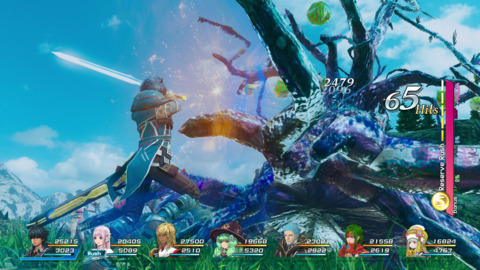
The story is a note-for-note retread of the previous game. Small girl shows up, she's insufferably bewildered and shy, and you have to save her to save the world. She has a great power and yeah, you end up saving the world and saving her. The main story arc is just terrible and involves weakly communicated interplanetary and intergalactic political conflicts. The scale of battles are tiny and fighting human enemies is never challenging. You could burn through the main story in 15 hours (most of that is just because you don't get fast travel until later). Where the story shines occasionally is the personal moments you'll have in each town as you stop and partake in "private actions" a series staple that allows 1 on 1 dialogue that fleshes out the personalty of each character. It was brilliant in the second and third game and here it shines as well. When the characters aren't talking about the awful plot they are funny and quirky in a dopey anime sort of way. Fiore, the witch looking woman insists that you're gay for about half the game until you profess you'd like to shack up with Miki a longtime sister-figure. I thought it was funny, anyhow. Unlike other games in the series you won't see other worlds or planets, you'll see two space ships and one other-dimensional final boss fight area.
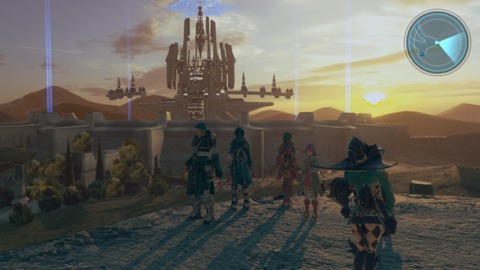
Most of the game is spent repeatedly circling the main planet of the game over and over again doing fetch quests. It is basically the first few hours of any MMORPG repeated for 40 hours, you do small quests and run around while exposition happens. This was intentional in production, the producer wanted the game to get away from the gameplay-movie-gameplay-movie drag of JRPGs as he states in an extensive video interview. The actual result is gameplay-no movie-gameplay-dialogue-no movie-gameplay, and the gameplay was intentionally dumbed down. All of this is explained as an attempt to feel more retro but made for the modern gamer that wants a seamless experience. This is where I call bullcrap! This was an unfinished or at least incredibly unpolished and lazy game that had to be released in whatever half-finished state that it was in. Star Ocean Integrity & Faithlessness is an incomplete game, and if it truly wasn't unfinished then it was the laziest flaming pile of garbage tri-Ace has ever released (keep in mind they made Infinite Undiscovery, and the 2nd and 3rd Final Fantasy XIII sequels.)
Am I way off complaining about a game I paid less than $14.00 for? I spent 40+ hours playing it over the course of several weeks, I did the majority of side quests and even worked to get several trophies for the game. I certainly got my moneys worth, and might have even if I paid full price for it. I'd wonder if more dedicate JRPG fans see far less wrong with the game? Maybe I'm just a jerk who expected too much from a series that had delivered so well in the past. All things considered I'm still a big fan of JRPGs in general. I rarely hesitate to buy Japanese games in general, games like Nier: Automata, Nioh, Persona 5 and many others have outclassed most other releases this year. I'd like to know what JRPGs people have been playing these last few years and what I might have missed on the Vita that might rid me of the foul taste of Star Ocean 5.
